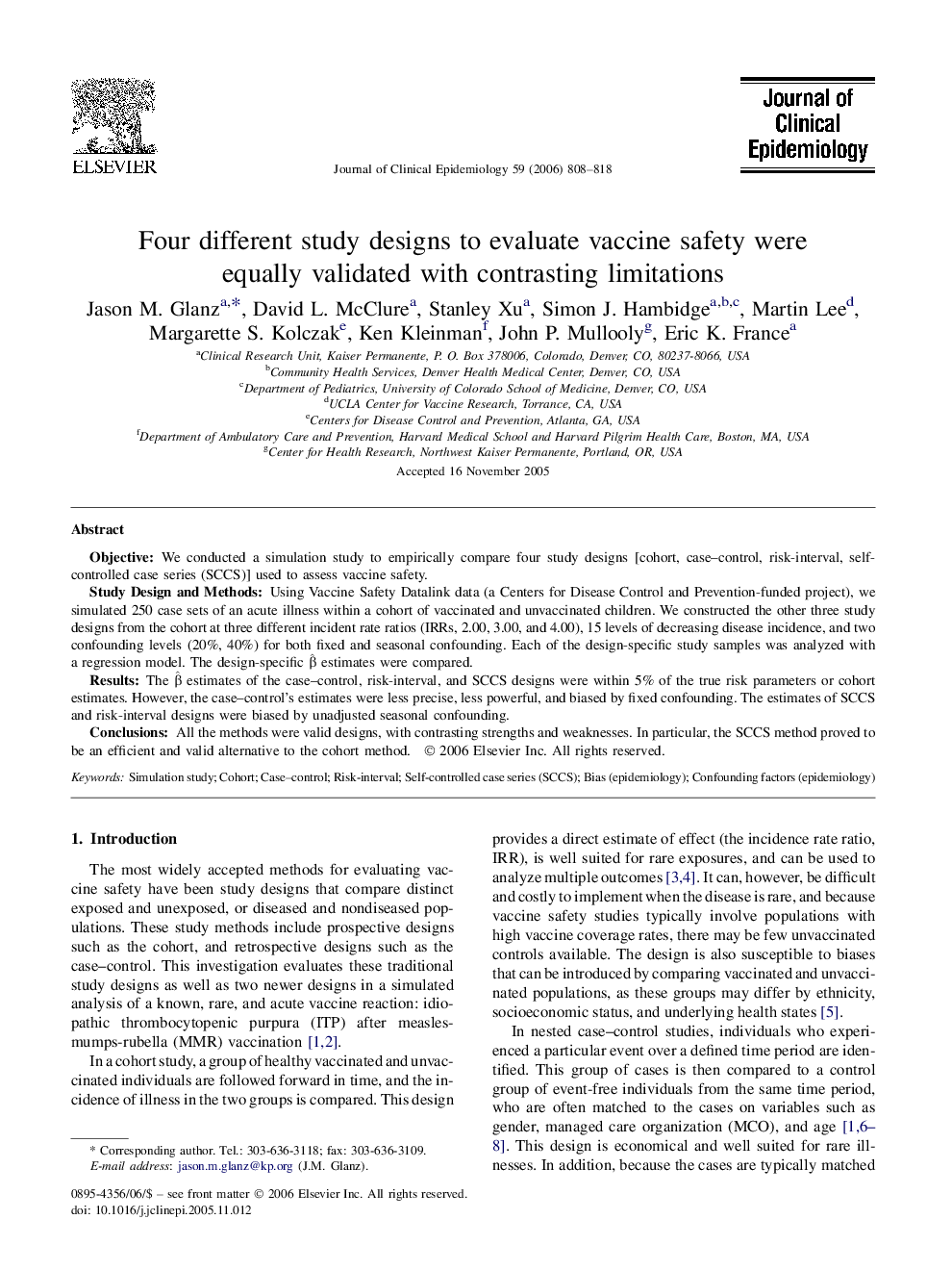| Article ID | Journal | Published Year | Pages | File Type |
|---|---|---|---|---|
| 1083524 | Journal of Clinical Epidemiology | 2006 | 11 Pages |
ObjectiveWe conducted a simulation study to empirically compare four study designs [cohort, case–control, risk-interval, self-controlled case series (SCCS)] used to assess vaccine safety.Study Design and MethodsUsing Vaccine Safety Datalink data (a Centers for Disease Control and Prevention-funded project), we simulated 250 case sets of an acute illness within a cohort of vaccinated and unvaccinated children. We constructed the other three study designs from the cohort at three different incident rate ratios (IRRs, 2.00, 3.00, and 4.00), 15 levels of decreasing disease incidence, and two confounding levels (20%, 40%) for both fixed and seasonal confounding. Each of the design-specific study samples was analyzed with a regression model. The design-specific β^ estimates were compared.ResultsThe β^ estimates of the case–control, risk-interval, and SCCS designs were within 5% of the true risk parameters or cohort estimates. However, the case–control's estimates were less precise, less powerful, and biased by fixed confounding. The estimates of SCCS and risk-interval designs were biased by unadjusted seasonal confounding.ConclusionsAll the methods were valid designs, with contrasting strengths and weaknesses. In particular, the SCCS method proved to be an efficient and valid alternative to the cohort method.
